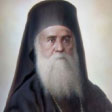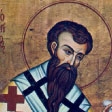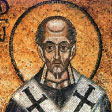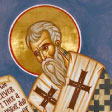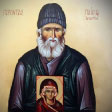Elder Joseph
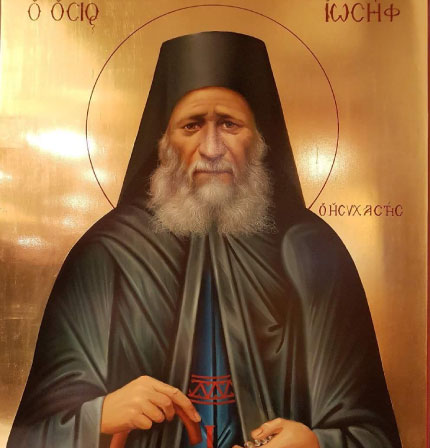
The Life and Ministry of Elder Jospeh the Hesychast
Elder Joseph the Hesychast stands as one of the most influential figures in the revival of Athonite monasticism in the 20th century. His life, hidden from the world in the caves and forests of Mount Athos, became a beacon of asceticism, prayer, and divine love. Through his spiritual children, Elder Joseph’s legacy blossomed, giving rise to a new generation of monasteries and spiritual renewal in Greece and beyond. His witness reveals the transformative power of unceasing prayer, humility, and complete surrender to the will of God.
Early Life and Call to Monasticism
Elder Joseph was born Francis Kottis in the village of Lefkes on the island of Paros, Greece, in 1897. His family was devout, and from a young age, Francis displayed an intense spiritual longing. As a child, he was known for his gentleness, charity, and love of prayer. The stories of saints captivated his heart, stirring within him a desire to leave the world behind and dedicate himself entirely to Christ.
As a young man, Francis worked to support his family, taking on various jobs, including that of a sailor and laborer. However, the call to monastic life never left him. After the death of his father, Francis felt an even stronger pull toward asceticism and began to pursue a life of greater piety. He practiced fasting, read spiritual texts, and spent long hours in solitary prayer.
In his early thirties, Francis resolved to leave the world entirely. He traveled to Mount Athos, the ancient center of Orthodox monasticism, seeking to find a spiritual father who could guide him in the life of hesychasm – the spiritual practice of inner stillness and the unceasing invocation of the name of Jesus.
Arrival on Mount Athos and the Hesychastic Life
Upon arriving at Mount Athos in 1921, Francis began to seek out holy elders who embodied the spiritual life he longed for. However, he was often disheartened by the absence of experienced hesychasts who could instruct him in the depths of noetic prayer. After wandering from monastery to monastery, he eventually settled in a remote cave near the Great Lavra, dedicating himself to intense asceticism and the ceaseless repetition of the Jesus Prayer: "Lord Jesus Christ, Son of God, have mercy on me, a sinner."
In the silence of the cave, Francis endured fierce spiritual battles, bodily afflictions, and demonic temptations. Yet, through perseverance, he began to experience the grace of God illuminating his heart. The Jesus Prayer, he discovered, was not merely a phrase but a means of communion with Christ Himself.
During this time, Francis met Elder Daniel of Katounakia, a revered ascetic who encouraged him to persist in the hesychastic life. Strengthened by Elder Daniel’s words, Francis continued his spiritual ascent, gradually attracting other monks who desired to learn from his example. In 1930, he was tonsured a monk, taking the name Joseph, after Saint Joseph the Betrothed.
Formation of a Brotherhood
Elder Joseph’s reputation as a hesychast began to spread across Mount Athos. Monks seeking spiritual renewal gathered around him, forming a small brotherhood. Among these disciples were figures who would later become spiritual luminaries, including Elder Ephraim of Philotheou, who carried Elder Joseph’s legacy to North America, and Elder Haralambos of Dionysiou.
The life of the brotherhood was one of extreme asceticism. They lived in caves and huts, enduring cold, hunger, and physical exhaustion. The monks slept little, dedicating their nights to vigil and prayer. Elder Joseph emphasized obedience, silence, and humility, teaching his disciples that the path to divine illumination lay in dying to the ego and surrendering completely to Christ.
Despite the harshness of their life, the brotherhood experienced profound joy. Elder Joseph’s teachings were not burdensome but imbued with love and spiritual encouragement. He often reminded his disciples that asceticism without love is empty and that the heart’s transformation is the work of grace, not human effort alone.
Spiritual Teachings and Legacy
Elder Joseph’s teachings, preserved through letters and oral tradition, emphasize the transformative power of the Jesus Prayer, the importance of repentance, and the necessity of spiritual vigilance. He taught that the greatest battle is against the thoughts (logismoi) that wage war against the soul. Through constant prayer and the remembrance of God, the heart gradually attains peace, becoming a temple of the Holy Spirit.
One of Elder Joseph’s core teachings was the concept of nepsis – watchfulness over the heart. He warned against the distractions of the mind and urged his disciples to cultivate stillness and inner attention. In this state, the monk enters the nous, the innermost chamber of the soul, where true knowledge of God is revealed.
Elder Joseph also emphasized the role of suffering in the spiritual life. He believed that trials and temptations were allowed by God to purify the soul, likening them to fire that refines gold. “Do not ask for the cross to be lifted,” he once wrote, “but for the strength to bear it.”
The Fruit of His Labors
Elder Joseph reposed in the Lord on August 15, 1959, the feast of the Dormition of the Theotokos. His death, like his life, was peaceful, and his face shone with an unearthly light, a sign of the grace that filled his being. Though he lived in obscurity, his influence soon spread beyond Mount Athos.
Through his disciples, Elder Joseph’s spiritual lineage revitalized numerous monasteries, including Philotheou, Dionysiou, and Vatopedi on Mount Athos. Elder Ephraim of Philotheou later established monastic communities across North America, bringing the Athonite spirit to the Western world.
Canonization and Continuing Influence
In 2020, the Ecumenical Patriarchate officially canonized Elder Joseph as Saint Joseph the Hesychast, affirming what the faithful had long believed – that his life was a vessel of divine grace. His relics continue to be a source of healing and spiritual renewal, and his teachings inspire monks and laypeople alike to pursue the path of prayer and repentance.Lessons from the Life of Saint Joseph the Hesychast
The life of Saint Joseph the Hesychast offers profound lessons for all Christians. His unwavering commitment to the ascetic life reminds us that holiness is not reserved for the few but is the calling of all who seek Christ with sincerity. His emphasis on the Jesus Prayer reveals that the heart’s transformation does not require external changes but an inward turning toward God.
In an age filled with noise and distraction, Saint Joseph’s life stands as a testament to the power of silence and stillness. His message is clear – the Kingdom of God is not found in comfort or worldly success but in the heart purified by love, humility, and unceasing prayer.
Through the prayers and intercessions of Saint Joseph the Hesychast, may we too learn to seek the face of Christ and draw closer to the eternal light of His presence.

